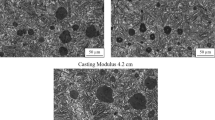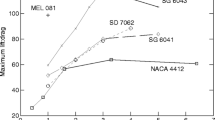Abstract
Direct-drive wind turbine generators are increasing in popularity, thanks to recent project developments—especially offshore, where reliability and efficiency are major cost drivers. Yet, high capital costs are forcing many original equipment manufacturers to consider lightweight, high-torque density generators for next-generation multi-megawatt turbines that may be difficult to realize by traditional design or manufacturing methods. In this study, we present a new design framework enabled by advanced machine learning and multimaterial additive manufacturing to perform a magnetic topology optimization that maximizes the torque per rotor active mass for a 15-megawatt direct-drive permanent magnet wind generator. A comparison of the proposed approach against conventional topology optimization demonstrated a significant increase in computational efficiency and accuracy in performance predictions. Results using single and multimaterial compositions for rotor core and magnets identify a wider choice of 3D printable designs for a given specification. A hybrid combination of sintered and dysprosium-free polymer-bonded magnets shows good potential for torque performance by saving material costs up to 8.75%. More than 30% improvement in rotor torque densities is identified which can marginally improve the overall generator torque density. With the rapid evolution of multipowder deposition technolgies, this study can greatly inspire a new paradigm for design-driven manufacturing with novel material compositions and lightweight, low-cost, high-strength multimaterial geometries that were previously unexplored for direct-drive generators.
Zusammenfassung
Windkraftanlagen mit Direktantrieb werden dank der jüngsten Projektentwicklungen immer beliebter – insbesondere im Offshore-Bereich, wo Zuverlässigkeit und Effizienz die Hauptkostentreiber sind. Die hohen Kapitalkosten zwingen jedoch viele Erstausrüster dazu, leichte Generatoren mit hoher Drehmomentdichte für Multi-Megawatt-Turbinen der nächsten Generation in Betracht zu ziehen, die mit herkömmlichen Konstruktions- oder Herstellungsverfahren möglicherweise schwer zu realisieren sind. In dieser Studie stellen wir ein neues Design-Framework vor, das durch fortschrittliches maschinelles Lernen und additive Fertigung aus mehreren Materialien eine Optimierung der magnetischen Topologie ermöglicht, die das Drehmoment pro aktiver Rotormasse für einen 15-Megawatt-Permanentmagnet-Windgenerator mit Direktantrieb maximiert. Ein Vergleich des vorgeschlagenen Ansatzes mit der herkömmlichen Topologieoptimierung zeigte eine signifikante Steigerung der Recheneffizienz und Genauigkeit bei Leistungsvorhersagen. Ergebnisse unter Verwendung von Einzel- und Multimaterialzusammensetzungen für Rotorkern und Magnete identifizieren eine größere Auswahl an 3D-druckbaren Designs für eine bestimmte Spezifikation. Eine Hybridkombination aus gesinterten und dysprosiumfreien polymergebundenen Magneten zeigt ein gutes Potenzial für die Drehmomentleistung, indem Materialkosten von bis zu 8,75 % eingespart werden. Es wurde eine Verbesserung der Rotordrehmomentdichten um mehr als 30 % festgestellt, was die Gesamtdrehmomentdichte des Generators geringfügig verbessern kann. Mit der rasanten Entwicklung der Mehrpulver-Abscheidungstechnologien kann diese Studie ein neues Paradigma für die designorientierte Fertigung mit neuartigen Materialzusammensetzungen und leichten, kostengünstigen und hochfesten Multimaterialgeometrien inspirieren, die bisher für Generatoren mit Direktantrieb noch nicht erforscht waren.

















Similar content being viewed by others
Notes
DfAM refers to a design method whereby functional performance, manufacturability, and cost can be optimized to the capabilities of AM technologies [27].
References
Gerdes J US energy department wants to see lighter offshore wind turbines. https://www.greentechmedia.com/articles/read/us-energy-department-wants-to-see-lighter-offshore-wind-turbines. Accessed 24 Nov 2020
Naschert C Global shortage of installation vessels could trouble waters for offshore wind, S&P Global market intelligence. https://www.spglobal.com/marketintelligence/en/news-insights/trending/LPC6P4u-UC9qVTTB4V05Cg2. Accessed 21 Nov 2020
Barter G, Mendoza N, Sethuraman L, Keller J, Bennion K, Kekelia B, Cousineau E, Feng X, Kotecha R, Narumanchi S (2020) Advanced next-generation high-efficiency lightweight wind turbine generator analysis. NREL/TP-5000-77516. National Renewable Energy Laboratory,
Li H, Chen Z, Polinder H (2008) Research report on numerical evaluation of various variable speed wind generator systems. Upwind Deliverable No.: D 1B2.b.3
Sethuraman L, Dykes K (2017) GeneratorSE: a sizing tool for variable-speed wind turbine generator. Technical Report NREL/TP-5000-66462
McDonald A, Bhuiyan NA (2016) On the optimization of generators for offshore direct drive wind turbines. IEEE Trans Energy Convers 32(1):348–358.
Lei G, Zhu J, Guo Y, Liu C, Ma B (2017) A Review of design optimization methods for electrical machines. Energies 10:1962
Bhuiyan NA, McDonald A (2019) Optimization of offshore direct drive wind turbine generators with consideration of permanent magnet grade and temperature. IEEE Trans Energy Convers 34(2):1105–1114
Chen Y, Pillay P (2005) Axial-flux PM wind generator with a soft magnetic composite core. In: Fourtieth IAS annual meeting. Conference record of the 2005 industry applications conference Hong Ko
Lamichane TN, Sethuraman L, Dalagan A, Wang H, Keller J, Paranthaman M (2020) P.: Additive manufacturing of soft magnets for electrical machines—a review. Materials today physics, vol 15
Sato T, Watanabe K, Igarashi H (2015) Multimaterial topology optimization of electric machines based on normalized gaussian network. IEEE Trans Magn. https://doi.org/10.1109/TMAG.2014.2359972
Sato S, Sato T, Igarashi H (2015) Topology optimization of synchronous reluctance motor using normalized gaussian network. IEEE Trans Magn 51(3):1–4
Watanabe K, Suga T, Kitabatake S (2018) Topology optimization based on the ON/OFF method for synchronous motor. IEEE Trans Magn 54(3):1–4
Okamoto Y, Hoshino R, Wakao S, Tsuburaya T (2018) Improvement of torque characteristics for a synchronous reluctance motor using MMA-based topology optimization Method. IEEE Trans Magn 54(3):1–4
Sato T, Fujita M (2019) A topology optimization method for electric machines and devices through submodular maximization. Electron Commun Jpn 102(6):3–11
Risticevic M, Moeckel A (2020) Topological approach for minimization of cogging torque in permanent magnet synchronous motors. Eur J Electr Eng 22(2):97–91
Kirschneck M, Polinder H, Van Ostayen RAJ, Van Kempen FCM, Rixen DJ (2015) Design of direct-drive wind turbine electrical generator structures using topology optimization techniques. 11thWorld Congress on Structural and Multidisciplinary Optimization,, Sydney
Hayes AC, Sethuraman L, Fingersh LJ, Dykes K (2018) Additive Manufacturing: A new paradigm for the next generation of high-power-density direct-drive electric generators. In: Proceedings of the ASME 2018 Power Conference Student Competition. Lake Buena Vista,
Jaen-Sola P, Mc Donald AS, Oterkus E (2020) Design of direct-drive wind turbine electrical generator structures using topology optimization techniques. J Phys: Conf Ser 1618 052009. https://doi.org/10.1088/1742-6596/1618/5/052009
Doi S, Sasaki H, Igarashi H (2019) Multi-objective topology optimization of rotating machines using deep learning. IEEE Trans Magn 55(6):7202605. https://doi.org/10.1109/TMAG.2019.2899934
Wrobel R, Mecrow B (2020) A Comprehensive review of additive manufacturing in construction of electrical machines. IEEE Trans Energy Convers. https://doi.org/10.1109/TEC.2020.2964942
Wu F, EL-Refaie AM (2019) Towards fully additively manufactured permanent magnet synchronous machines: opportunities and challenges. 2019 IEEE International Electric Machines & Drives Conference (IEMDC), San Diego
Popov V, Koptyug A, Radulov I, Maccari F, Muller G (2018) Prospects of additive manufacturing of rare-earth and non-rare-earth permanent magnets. Proc Manuf 21:100–108
Volegov AS, Andreev SV, Selezneva NV, Ryzhikhin IA, Kudrevatykh NV, Meadler L, Okulov IV (2020) Additive manufacturing of heavy rare earth free high-coercivity permanent magnets. Acta Mater 188:733–739
Gandha K, Nlebedim IC, Kunc V, Lara-Curzio E, Fredette F, Paranthaman MP (2020) Additive manufacturing of highly dense anisotropic Nd–Fe–B bonded magnets. Scr Mater 183:91–95
Bernier F, Maged I, Mihaela M, Yannig T, Lamarre JM (2020) Additive manufacturing of soft and hard magnetics materials used in electrical machines. Met Powder Rep. https://doi.org/10.1016/j.mprp.2019.12.002
Yunlong T, Zhao YF (2016) A survey of the design methods for additive manufacturing to improve functional performance. Rapid Prototyp J 22(3):569–590
Ibrahim M, Bernier F, Lamarre J‑M (2020) Novel multi-layer design and additive manufacturing fabrication of a high power density and efficiency interior PM motor. 2020 IEEE Energy Conversion Congress and Exposition (ECCE), pp 3601–3606
McGarry C, McDonald AS, Alotaibi N (2019) Optimization of additively manufactured permanent magnets for wind turbine generators. 2019 IEEE International Electric Machines & Drives Conference (IEMDC), San Diego
Wang C, Tan XP, Tor SB, Lim CS (2020) Machine learning in additive manufacturing: State-of-the-art and perspectives. Addit Manuf. https://doi.org/10.1016/j.addma.2020.101538
Sasaki H, Igarashi H (2019) Topology optimization of IPM motor with aid of deep learning. Int J Aappl Electromagn Mech 59(1):87–96
Hidenori S, Igarashi H (2019) Topology optimization accelerated by deep learning. IEEE Trans Magn. https://doi.org/10.1109/TMAG.2019.2901906
Asanuma J, Doi S, Igarashi H (2020) Transfer learning through deep learning: application to topology optimization of electric motor. IEEE Trans Magn. https://doi.org/10.1109/TMAG.2019.2956849
Chen CT, Gu GX (2020) Generative deep neural networks for inverse materials design using backpropagation and active learning. Adv Sci. https://doi.org/10.1002/advs.201902607
Gaertner E, Rinker J, Sethuraman L, Zahle F, Anderson B, Barter G, Abbas N, Meng F, Bortolotti P, Skrzypinski W, Scott G, Feil F, Bredmose H, Dykes K, Shields M, Allen C, Viselli A (2020) Definition of the IEA 15-megawatt offshore reference wind turbine, national renewable energy laboratory. NREL/TP-5000-75698
Optimization of electric motors and generators with additive manufacturing (MADE3D). https://www.labpartnering.org/lab-technologies/6ebf5c69-dc94-4393-a2e7-49042e16502d. Accessed 23 Nov 2020
https://www.altair.com/flux/. Accessed 23 Nov 2020
Fluxtrol 100 data sheet. https://fluxtrol.com/inc/pdf/Fluxtrol-100-Specs.pdf. Accessed 28 Nov 2020
Design of experiments with hyperstudy—a study guide. https://altairuniversity.com/thank-you-free-ebook-design-of-experiments-with-hyperstudy-a-study-guide/?submissionGuid=0fae75dd-bc8f-4087-8d70-dc3763e0b519. Accessed 21 Nov 2020
Pajot J (2013) Optimal design exploration using global response surface method: rail crush, altair hyperworks white paper
Manninen A, Keränen J, Pippuri-Mäkeläinen J, Riipinen T, Metsä-Kortelainen S, Lindroos T (2019) Impact of topology optimization problem setup on switched reluctance machine design. 2019 22nd International Conference on the Computation of Electromagnetic Fields (COMPUMAG),, Paris
Aerosint How to make cheap, scalable multi-material 3D printing a reality. https://aerosint.com/how-to-make-cheap-scalable-multi-material-3d-printing-a-reality/,last. Accessed 24 Nov 2020
China’s exports of NdFeB magnets increased 11% in 2018. https://www.adamasintel.com/china-ndfeb-exports-increased-2018/. Accessed 27 Dec 2020.
Al-Qarni A, Wu F, El-Refaie A (2019) High-torque-density low-cost magnetic gear utilizing hybrid magnets and advanced materials. 2019 IEEE International Electric Machines & Drives Conference (IEMDC), San Diego. Wor CA, USA, pp 225–232
Acknowledgements
The authors gratefully acknowledge Mohammed Elamin and Eric Chavez from Altair for software support and troubleshooting. This work was authored by the National Renewable Energy Laboratory, operated by Alliance for Sustainable Energy, LLC, for the U.S. Department of Energy (DOE) under Contract No. DE-AC36-08GO28308. Funding provided by U.S. Department of Energy Office of Energy Efficiency and Renewable Energy Wind Energy Technologies Office. The views expressed in the article do not necessarily represent the views of the DOE or the U.S. Government. The U.S. Government retains and the publisher, by accepting the article for publication, acknowledges that the U.S. Government retains a nonexclusive, paid-up, irrevocable, worldwide license to publish or reproduce the published form of this work, or allow others to do so, for U.S. Government purposes.
Author information
Authors and Affiliations
Contributions
Latha Sethuraman led the research idea, designed and performed the numerical simulations, generated design data, performed regression-based optimizations, analyzed the results and wrote the manuscript; Ganesh Vijayakumar and Shreyas Ananthan developed the ML implementations within MADE3D-AML software; Ganesh Vijayakumar performed ML-based optimizations; Parans Paranthaman provided technical inputs on material selection and manufacturing; Jonathan Keller helped supervise the project and provide comments; and Ryan King provided technical inputs to improving the ML-based optimization. Thanks are also due to Garrett Barter for WISDEM modeling and his inputs on cost sensitivity.
Corresponding author
Appendix
Appendix
Rights and permissions
About this article
Cite this article
Sethuraman, L., Vijayakumar, G., Ananthan, S. et al. MADE3D: Enabling the next generation of high-torque density wind generators by additive design and 3D printing. Forsch Ingenieurwes 85, 287–311 (2021). https://doi.org/10.1007/s10010-021-00465-y
Received:
Revised:
Accepted:
Published:
Issue Date:
DOI: https://doi.org/10.1007/s10010-021-00465-y








